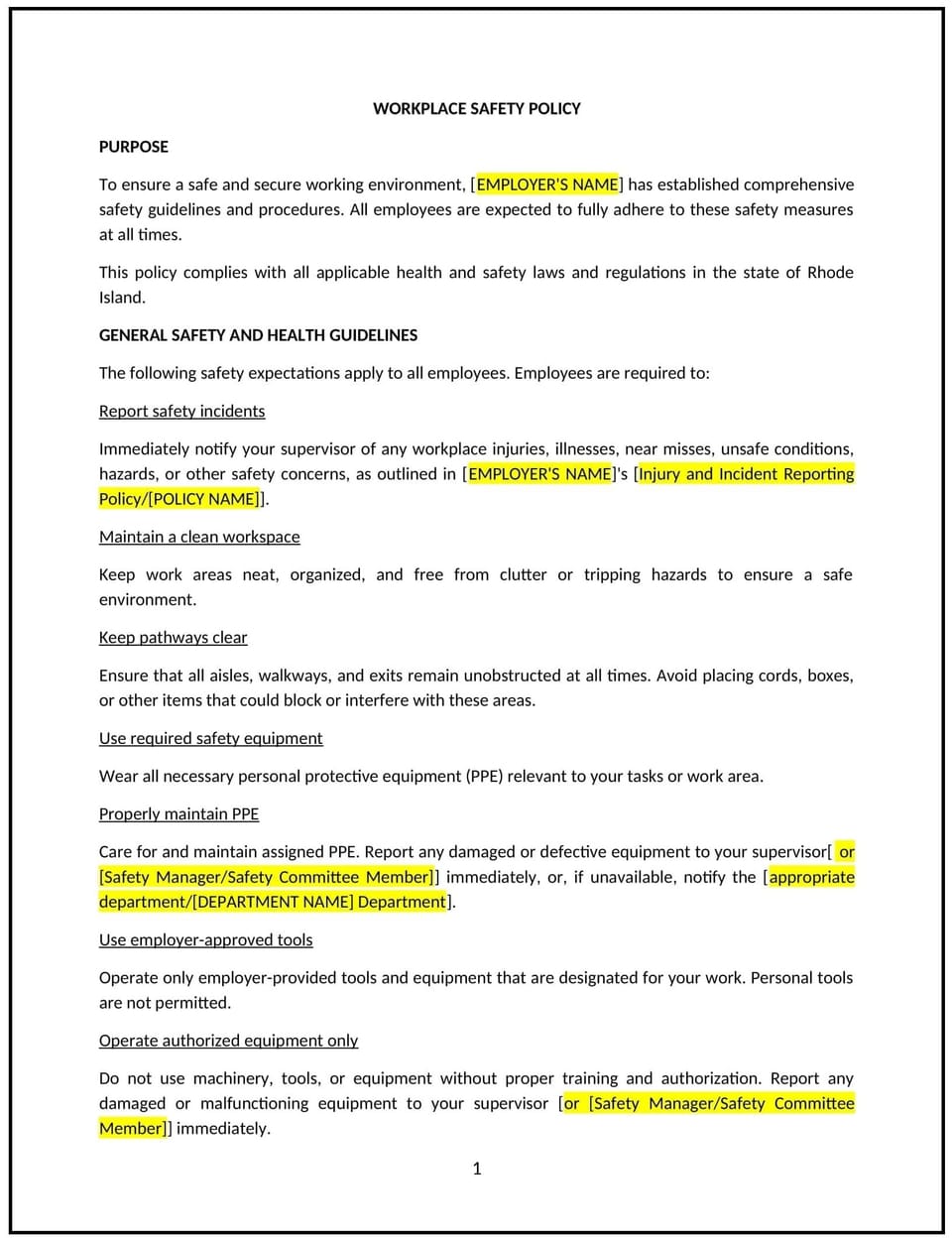Workplace safety policy (Rhode Island): Free template

Workplace safety policy (Rhode Island)
This workplace safety policy is designed to help Rhode Island businesses establish guidelines for maintaining a safe and healthy work environment. It outlines procedures for identifying hazards, reporting incidents, and strengthening compliance with safety regulations.
By adopting this policy, businesses can promote safety, reduce risks, and support employee well-being.
How to use this workplace safety policy (Rhode Island)
- Define safety procedures: Outline steps for identifying and addressing workplace hazards, such as regular inspections and risk assessments.
- Establish reporting procedures: Provide steps for employees to report safety concerns or incidents, including anonymous reporting options.
- Address training: Specify safety training requirements for employees and managers.
- Ensure compliance: Align the policy with Rhode Island’s workplace safety laws and regulations.
- Train managers: Educate supervisors on enforcing safety procedures and addressing incidents.
- Review and update: Assess the policy annually to ensure it aligns with evolving business needs and legal requirements.
Benefits of using this workplace safety policy (Rhode Island)
This policy offers several advantages for Rhode Island businesses:
- Promotes safety: Reduces the risk of workplace accidents and injuries, creating a secure environment for employees.
- Supports compliance: Aligns with Rhode Island’s workplace safety laws and regulations.
- Enhances trust: Demonstrates the business’s commitment to employee well-being and safety.
- Reduces risks: Minimizes the likelihood of legal issues and reputational damage related to workplace safety.
- Improves productivity: A safe work environment leads to fewer disruptions and higher employee morale.
Tips for using this workplace safety policy (Rhode Island)
- Communicate the policy: Share the policy with employees and include it in the employee handbook.
- Provide training: Educate managers and employees on safety procedures and hazard identification.
- Monitor compliance: Regularly review workplace safety and address any issues promptly.
- Address incidents promptly: Take corrective action if safety concerns or incidents are reported, ensuring support is provided.
- Update regularly: Assess the policy annually to ensure it aligns with evolving business needs and legal requirements.
Q: How does this policy benefit businesses?
A: By promoting safety, businesses can reduce risks, support employees, and align with Rhode Island’s workplace safety laws.
Q: What types of hazards are typically covered by this policy?
A: This policy covers physical hazards, chemical hazards, ergonomic risks, and any other potential safety concerns in the workplace.
Q: How can employees report safety concerns or incidents?
A: Employees can report concerns through designated channels, such as a hotline, email, or in-person reporting to a supervisor.
Q: What should businesses do if a safety incident occurs?
A: Businesses should address the incident promptly, provide support to affected employees, and investigate to prevent recurrence.
Q: How often should businesses review this policy?
A: Businesses should review the policy annually or as needed to ensure it aligns with evolving business needs and legal requirements.
This article contains general legal information and does not contain legal advice. Cobrief is not a law firm or a substitute for an attorney or law firm. The law is complex and changes often. For legal advice, please ask a lawyer.


